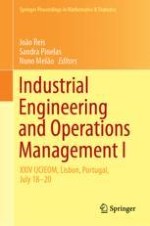Based on the 2018 International Joint Conference on Industrial Engineering and Operations Management (IJCIEOM) conference that took place in Lisbon, Portugal, this proceedings volume is the first of two focusing on mathematical applications in digital transformation. The different contributions in this volume explore topics such as modelling, simulation, logistics, innovation, sustainability, health care, supply chain, lean manufacturing, operations management, quality and digital. Written by renowned scientists from around the world, this multidisciplinary volume serves as a reference on industrial engineering and operations management and as a source on current findings for researchers and students aiming to work on industrial-related problems.
